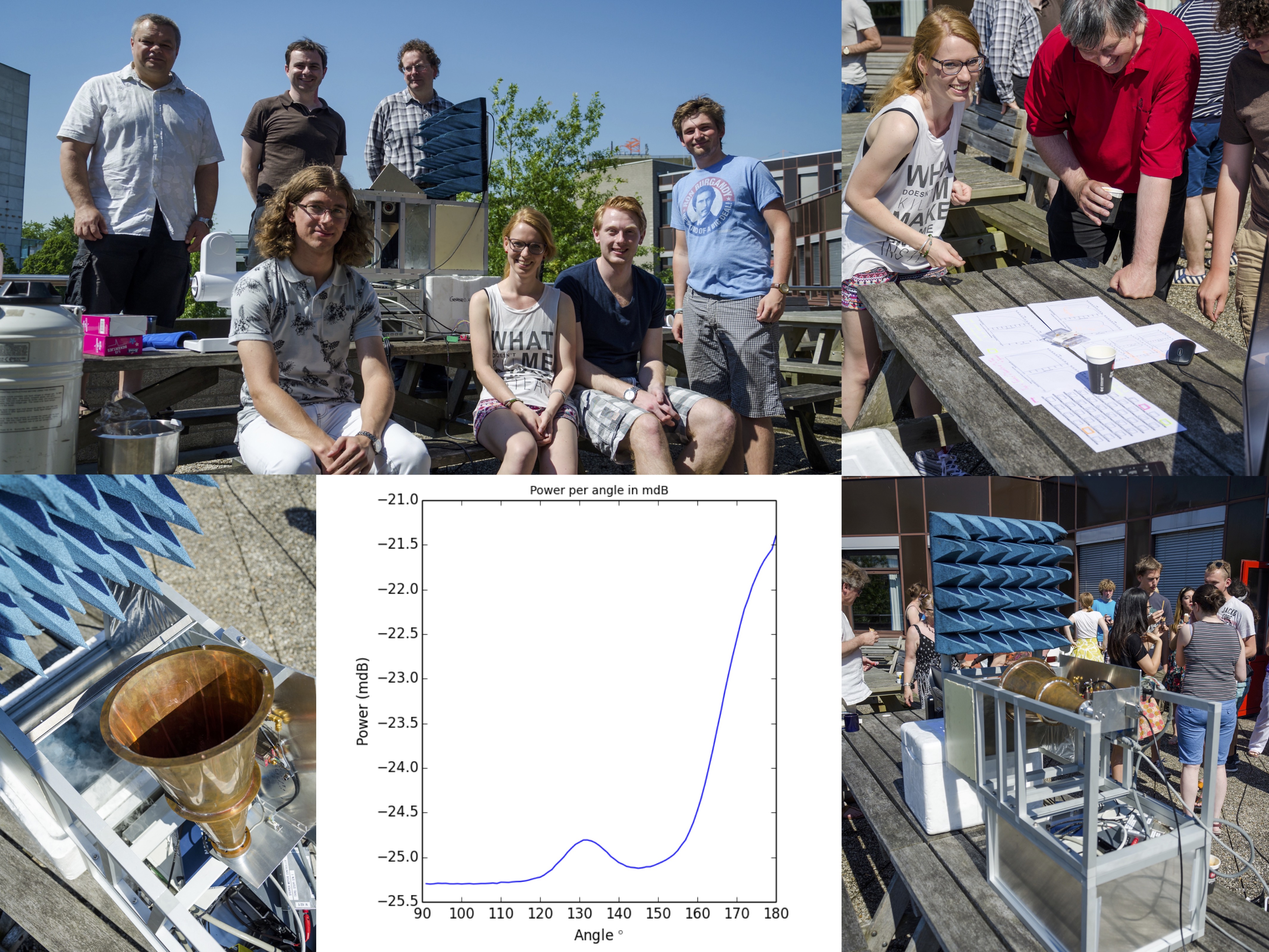Daily Image
31-07-2015First light of the Kapteyn Radio Telescope
| Submitter: | John McKean |
| Description: | In July 1965, two papers appeared in ApJ Letters that changed our view of the Universe. The first was by Dicke, Peebles, Roll & Wilkinson from Princeton University, who postulated that there should be an excess temperature emission from the Universe. The existence and exact temperature of this cosmic microwave background would place important constraints on the Big Bang model for the Universe and its evolution to present day. Although they did not present a detection, their letter was motivated by another group, Penzias & Wilson at Bell Laboratories who, in the very next letter in the journal, reported the discovery of an excess temperature of 3.5 +/- 1 K from their antenna that could not be accounted for from either their telescope or the atmosphere. As it turned out, Penzias & Wilson had discovered the cosmic microwave background, winning them the Noble prize in Physics in 1978. 50 years later, in July 2015, four young budding radio astronomers at the University of Groningen (RuG) have built their own radio telescope to make this measurement as part of their bachelors thesis projects. Bram Lap (right) designed and built the horn antenna, Maik Zandvliet (middle-right) constructed and tested the backend of the receiver system (amplifiers, filters and mount construction), Frits Sweijen (left) wrote the telescope control software and carried out test observations of the Sun, and Willeke Mulder (middle-left) devised the calibration scheme and made the final measurement of the CMB. Shown in the image is the team with their telescope, along with their supervisors, John McKean (middle; Staff Astronomer at ASTRON and Asst. Prof. at the RuG), Andrey Baryshev (left; Prof. at the RuG) and Ronald Hesper (right; Researcher at the RuG). The other pictures and data plot are from their first light observation on 2 July 2015, which detected the Sun (at 132 deg. and the buildings at the Kapteyn Astronomical Institute at > 155 deg.). The group have successfully detected an excess radio emission from the Universe with their telescope and are currently reducing the systematics in the receiver temperature calibration in order to make a precise measurement of the CMB temperature. The radio telescope will be used by future undergraduate classes to make measurements of the radio sky as part of the 3rd-year course "Introduction to Radio Astronomy", taught by John McKean at the RuG. The team would like to thank the staff at SRON and ASTRON for their help in building the telescope, and Prof. Jim Moran from Harvard University for his advice on carrying out the experiment. |
| Copyright: | Pictures taken by Niels Bos |
| Tweet |  |
